Sorted by date Results 26 - 50 of 61
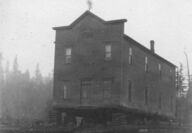
The first settlers to make their homes near the head of Little Skookum Inlet in the mid-1880s called their settlement Kamilche, after the Native American name for the valley. Around 1889, a logging railroad was pushing its way past Kamilche up Little Skookum to reach more open water. When the railroad reached the point where Little Skookum merged with Totten Inlet, docks were built and a small community called New Kamilche took shape. In addition to homes, there was a hotel, saloons, store...
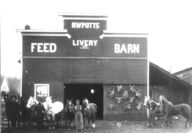
Washington's ban on the manufacture and sale of alcoholic beverages became effective in 1916, making the state one of 33 that banned alcohol before the 18th Amendment to the Constitution made it illegal nationwide in 1919. This story is taken from the March 3, 1921, edition of the Mason County Journal. (Prohibition was repealed nationwide in 1933.) In mid-March 1921, Mason County Sheriff Ralph Potts and his deputies, aided by federal officers, raided two moonshine distilleries that were in activ...
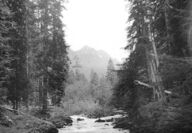
On Feb. 7, 1940, Skokomish Valley neighbors of 70-year-old Billy Vincent feared the worst when they discovered that the cable on which he would have propelled his "basketlike contrivance" across the north fork of the rain-swollen Skokomish River was broken and Vincent could not be located. He had crossed the river in the morning, picked up a sack of feed at the John Garrison place, then started back home. Early in the afternoon, Garrison discovered the broken cable, and finding no trace of Vince...
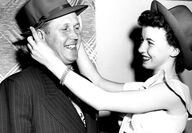
Most people who've lived in Mason County for several years have experienced at least one significant earthquake. One of them occurred at 11:57 a.m. on April 13, 1949. The 7.1 magnitude earthquake, centered between Olympia and Tacoma, affected all of Washington, northwest Oregon, southwest British Columbia, the Idaho Panhandle and northwest Montana. Eight people were killed, and dozens were seriously injured. Although damage in Mason County was not severe, some people who were teenagers at the...
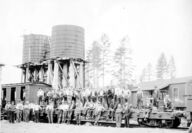
The following story is from the Feb. 2, 1939, edition of the Shelton-Mason County Journal. Oxbow is in the Wynoochee River drainage area. At Simpson Logging Company's Camp 5, about as far from the famous Wynoochee Oxbow as a big scowling rain cloud can blow in two minutes, twin tanks perch beside the railroad track. Offhand, you'd say they were water tanks, but loggers up in that neck of the woods will chuckle and tell you you're wrong .... they're "rain gauges" ... Oxbow rain gauges. And after...
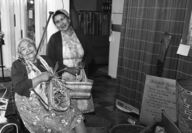
In January 1973, the students in Virginia Pill's third-grade class at Hood Canal School, who had recently studied early Indians and pioneers, had a visit from two women who demonstrated how the early natives and pioneers made baskets and clothing. "Grandma" Louisa Pulsifer, a 91-year-old Skokomish basket-weaver, brought a basket full of cattails, sweet grass and bear grass. The children gathered around as she showed them how to split the cattails, then roll them on their knees so they would...
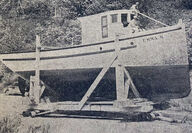
The idea for this story came from Jerry Sheldon, who as a boy, watched a boat being built in a shed near his home on Hillcrest. The details are from issues of the Shelton-Mason County Journal. Over a period of three days in May 1942, a homemade fishing boat called Emma M. made the 2-mile trip down the highway from a backyard shed on Arcadia Street, Hillcrest, through downtown Shelton to a successful launch at Bedell's Moorage on Oakland Bay. Emma M. was the creation of brothers Art and Bill...
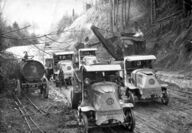
From the Jan. 9, 1920, issue of the Journal: Old 1919 passed away last Wednesday night to the tune of sweet music. Three hundred couples danced at his funeral at the Peninsular Railway Club's 12th annual ball, and eagerly welcomed in the new born babe, 1920. The hall was decorated with a canopy of garlands hung from a large bell at the center. Gay masquerade hats worn by the dancers lent color to the scene. At midnight, the program was suspended while supper was served at the Hotel Shelton. Afte...
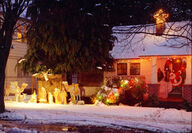
At the Dec. 5 meeting of the Shelton City Council, Mayor Frank Travis Jr. announced the city had decided not to award a franchise for cable television within the city limits. He told applicant Thomas Brokaw that this decision left the business as a free enterprise with which he could proceed, if he wished. Gay Taylor, who was already operating a private cable television system in Shelton, had been denied a city franchise in 1957. Weather made the front page of the Journal on Dec. 7. Nearly 7 fee...

The Shelton-Mason County Journal of Dec. 4, 1941, was focused on the upcoming Christmas holiday. The front page included a schedule of where and when Santa Claus would be appearing, and shoppers were encouraged to "shop early and shop in your hometown." The Shelton Garden Club announced details of its annual outdoor Christmas home illumination contest, and a two-day open house, including a dedication ceremony, was being planned for the newly completed Shelton gymnasium. Three days later,...
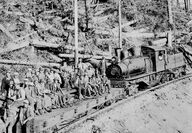
This is the conclusion of Jim Howell's memoirs of growing up at Simpson's Camp 3 between 1934 and 1946. We were poor and so were most others. I got two pairs of shoes each year. Ninety-eight-cent tennis shoes for summer - they usually lasted for a month or so and then I went barefoot. When school started I got a new pair of sturdy shoes. For supper our main, and sometimes only course was cornmeal mush. Pork was our main meat staple, except when an old hen quit laying and then we had chicken and...
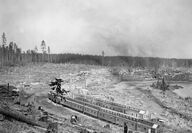
This two-part story is from a memoir written by Jim Howell in the late 1990s. Jim was born in Hoquiam in 1929 and lived with his parents and two sisters at Simpson Logging Company's Camp 3 in the Skokomish Valley from 1934 to 1946. "Growing up in Simpson's Camp 3 in the 1930s and 1940s was a unique experience. Our houses were close to each other, but our backyard was trees for miles and miles, with small lakes and streams, hills and canyons, abounding with wildlife. The Skokomish River, down a...
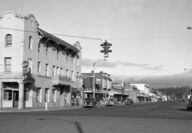
On Oct. 27, 1949, a Shelton-Mason County Journal feature story began, "Imaginations of children run rampant on Hallowe'en night, Oct. 31. The evening is a combination of symbolic knick-knacks drawn from ancient beliefs, and warm parlors where the youngsters bob for apples, pin tails on horses, and eat donuts from a string. Hallowe'en, or properly All Hallows' Eve, is the eve before All Hallows, the festival of All Saints, which is Nov. 1. The holiday antedates Christ, the traditions going back...
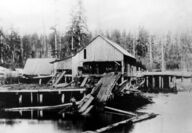
In 1854, Joseph Sherwood and his brother Warren traveled from their home in Vermont to Sawamish County (name changed to Mason County 10 years later) in the Washington Territory, bringing with them considerable experience in sawing and water power. Soon after settling on land at the western edge of North Bay, they built a waterwheel and sawmill near the mouth of what is now known as Sherwood Creek. They created a dam at the mill site to turn the wheel, and a second one farther up the creek for...
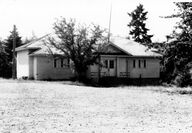
When Fred Curl gave up on transporting children to the Detroit school, the school board bought a secondhand Model T Ford and one of the teachers took on the additional job of driving. There was a steep hill about a half mile from the school and often the car with its load couldn't make it. The teacher would send the girls ahead on foot and direct the boys to push. Sometimes she would tell all the children to walk to school while she waited for the engine to cool a bit. A few years later,...
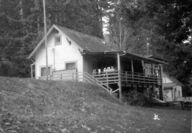
Much of the information in this story is from the book "Grapeview, Detroit of the West," by Mary Sagerson and Duane Robinson. In 1893, when the Grapeview area was known as Detroit (the name was changed in 1922), a small one-room schoolhouse was built near the water. "The school was located at the head of the slough right by the skid road that loggers built. The oxen teams working on hauling the logs down would fascinate the children. After their work, the loggers would leave the oxen in the clea...
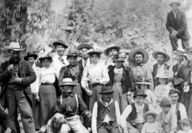
The following story is adapted from "A Brief Historical Sketch of Shelton, Washington" written by Grant Angle in 1940, and Jean Bearden's "History of Hoodsport," first published in 1987. In 1886, the Rev. Myron Eels, writing about his 10 years of missionary work with the Skokomish Indians, had this to say about the Indian potlatch: "The potlatch is the greatest festival the Indian has. 'Potlatch' is a Chinook word meaning 'to give.' The central idea of it is a distribution of gifts by a few...
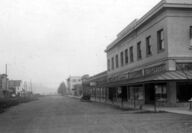
At about 3 on the morning of Aug. 1, 1919, "neighbors gradually awoke to the fact that the old Willey residence on the northwest corner of Cota and Seventh was on fire. By the time the alarm was turned in and the steam siren sounded the call, the building was burning fiercely and beyond saving, but the hose team held the fire in check and prevented it from spreading. Sparks and pieces of shingles rose high enough in the air to fall all over the business district, but caused no damage....
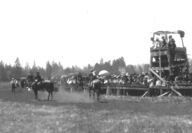
This story is from the June 17, 1921, edition of the Journal. Shelton Prairie included what is now the Mountain View area. The racetrack was about where the Barkley Square mini mall is situated. A series of Indian horse races, arranged between owners from the Skokomish and Oakville reservations, brought a touch of old times to Shelton Prairie Sunday and attracted a considerable crowd to see the sport, now almost passed in this section. For some time past, each tribe has been claiming the best...
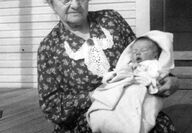
In 1913, Ida Finch had only her youngest son to care for and was beginning to feel lonely and unneeded. For most of her life, activities in Hoodsport had rotated around Ida and her family. She had created the school, the Sunday School and the Literary Society, entertained, provided lodging to travelers heading for Lake Cushman (even managed the Antlers Hotel for one summer), helped with the births of babies, made trips to Seattle to bring back supplies for the school. Now, at age 47 and knowing...
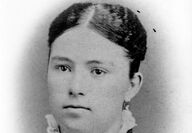
In 1872, 9-year-old Ida Robbins traveled by ship with her parents from Maine to California to reunite with family members. Her father was ship Captain George Robbins, who hauled cargo up and down the West Coast. Robbins became particularly impressed with Hood Canal, and around 1878 he gave up the seafaring life and moved his family to the west side of the canal, where they became the first white settlers in the area. About that same time, Vincent Finch came from New York to the Washington...
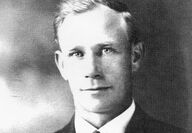
Humphrey "Hump" Nelson was one of the premier oyster growers in early Mason County. His family moved from Michigan to Tacoma in 1888, when he was about 2 years old. Not long after they arrived, Hump's father went to work for the Blakely Logging Co. and moved his family to the Kamilche area, where as a young man he got his start in the oyster business. Around 1965, he wrote his autobiography, "The Little Man and the Little Oyster," published by the Mason County Historical Society in 1990. This ex...
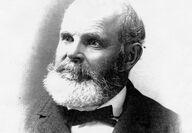
In 1892, a journalist for the Seattle Press Times wrote, "Captain Miller of the tug Biz and owner of that antediluvian ark the Ajax, is one of the old landmarks on the waterfront, weighs something over 200 pounds, and is short, exceedingly short. A better-hearted man never lived, and if he does run slightly to flesh, he is one of the keenest and most pleasant tugboat men on the Sound. He is always in a rush and his short and heavy legs carry him over the ground in remarkably quick time. He is...
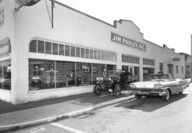
The feature story March 5 included a photo of a car that had been blown apart on a county road when dynamite in the trunk exploded. The driver, who was killed, had been transporting the dynamite to his home to use for blasting stumps. The city of Shelton immediately began to draw up an ordinance that would ban the purchase, transport and storing of explosives within city limits - the driver had been parked at a local grocery store only 30 minutes earlier. The March 12 issue included the...
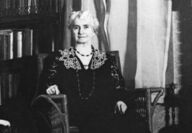
This Saturday from 2 to 4 p.m., the Mason County League of Women Voters is sponsoring an open house at the Mason County Historical Museum (427 West Railroad Ave.) to showcase seven women, past and present, who have made a difference in the county. One of those women is Mary M. Knight, who played a significant role in the early days of education. This is Mary's story. Mary Dunbar was born in Ingham County, Michigan, on Sept. 2, 1854, the only daughter of the five children of C. S. and Orpah...